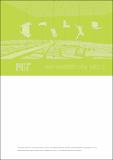A new insight into land use classification based on aggregated mobile phone data
Author(s)
Pei, Tao; Sobolevsky, Stanislav; Ratti, Carlo; Shaw, Shih-Lung; Li, Ting; Zhou, Chenghu; ... Show more Show less
DownloadRatti_A new insight.pdf (1.365Mb)
OPEN_ACCESS_POLICY
Open Access Policy
Creative Commons Attribution-Noncommercial-Share Alike
Terms of use
Metadata
Show full item recordAbstract
Land-use classification is essential for urban planning. Urban land-use types can be differentiated either by their physical characteristics (such as reflectivity and texture) or social functions. Remote sensing techniques have been recognized as a vital method for urban land-use classification because of their ability to capture the physical characteristics of land use. Although significant progress has been achieved in remote sensing methods designed for urban land-use classification, most techniques focus on physical characteristics, whereas knowledge of social functions is not adequately used. Owing to the wide usage of mobile phones, the activities of residents, which can be retrieved from the mobile phone data, can be determined in order to indicate the social function of land use. This could bring about the opportunity to derive land-use information from mobile phone data. To verify the application of this new data source to urban land-use classification, we first construct a vector of aggregated mobile phone data to characterize land-use types. This vector is composed of two aspects: the normalized hourly call volume and the total call volume. A semi-supervised fuzzy c-means clustering approach is then applied to infer the land-use types. The method is validated using mobile phone data collected in Singapore. Land use is determined with a detection rate of 58.03%. An analysis of the land-use classification results shows that the detection rate decreases as the heterogeneity of land use increases, and increases as the density of cell phone towers increases.
Date issued
2014-05Department
Massachusetts Institute of Technology. Department of Urban Studies and Planning; Massachusetts Institute of Technology. School of Architecture and Planning; Massachusetts Institute of Technology. SENSEable City LaboratoryJournal
International Journal of Geographical Information Science
Publisher
Taylor & Francis
Citation
Pei, Tao, Stanislav Sobolevsky, Carlo Ratti, Shih-Lung Shaw, Ting Li, and Chenghu Zhou. “A New Insight into Land Use Classification Based on Aggregated Mobile Phone Data.” International Journal of Geographical Information Science 28, no. 9 (May 8, 2014): 1988–2007.
Version: Original manuscript
ISSN
1365-8816
1362-3087